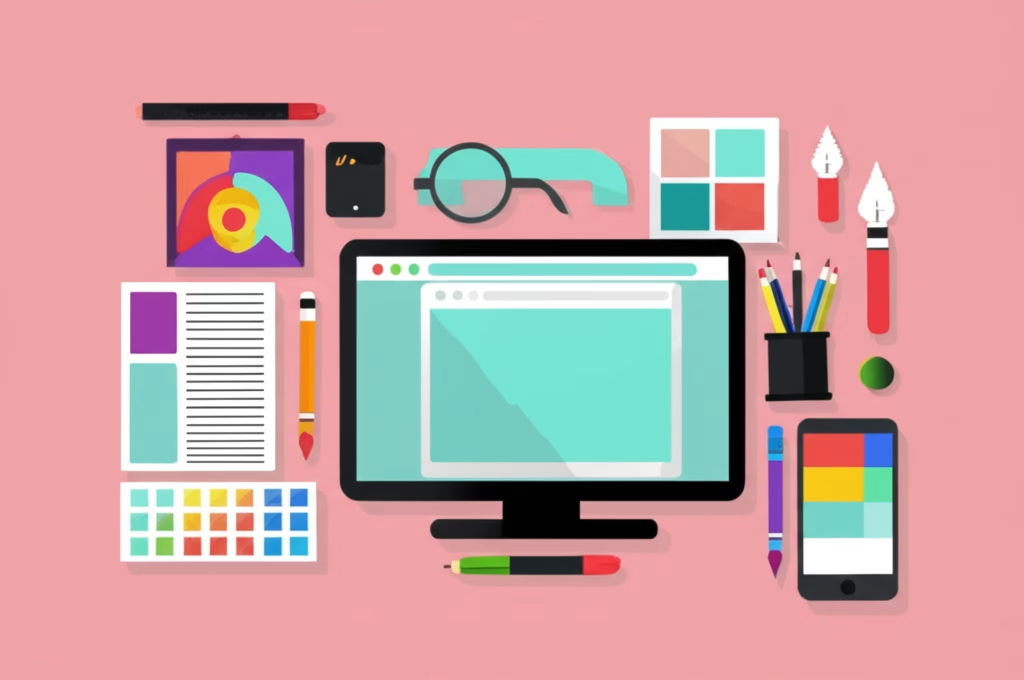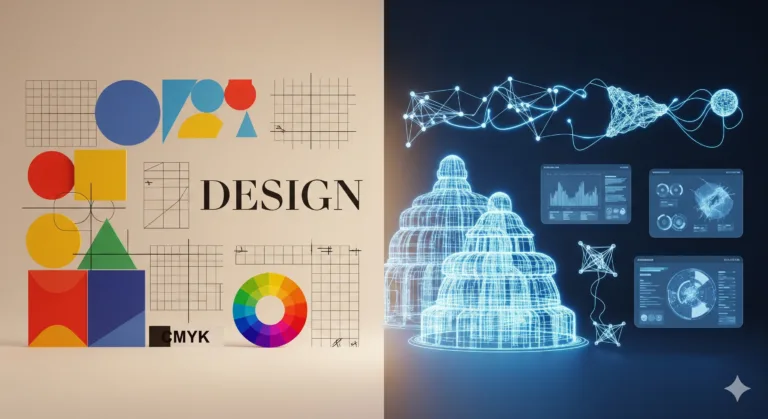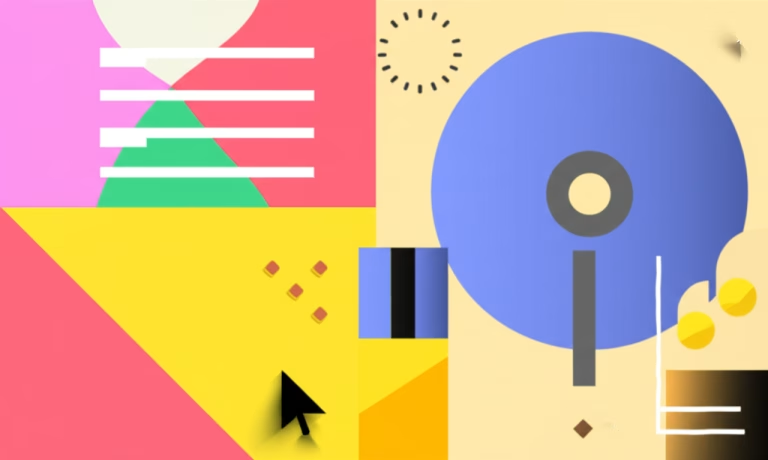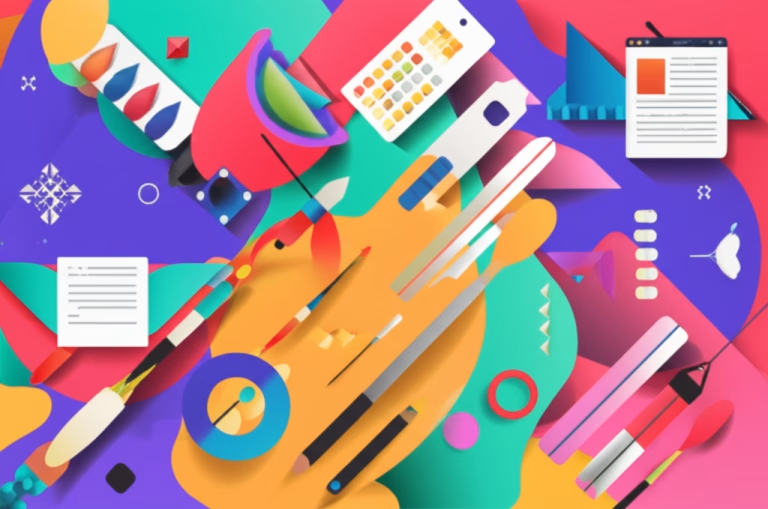Why Your Design Journey is Fundamental?
Embarking on your design journey might feel daunting, like standing at the base of a tall mountain. You see incredible designs everywhere – on websites, in magazines, on your favorite apps – and wonder if you could ever create something similar. The truth is, every amazing designer started right where you are now: with curiosity and a desire to learn. This journey isn’t just about learning software or techniques; it’s about understanding how visual communication works and how to express your ideas effectively. Mastering design fundamentals is crucial because it gives you the language and tools to turn your vision into reality. It helps you solve problems creatively and connect with others through visuals. In this article, you’ll discover the essential first steps to take, common pitfalls to avoid, and a clear path to begin building your creative skills. Get ready to unlock your potential!
Table of Contents
What Exactly is Starting Your Design Journey?
Starting your design journey means consciously deciding to learn the principles and practices that underpin visual creation. It involves exploring different areas like graphic design, web design, or illustration, and understanding the core elements that make visuals effective. It’s not about being instantly brilliant; it’s about committing to a process of learning, experimenting, and growing. Think of it like learning to play a musical instrument. You start with basic scales and chords before you can play complex melodies. Similarly, in design, you begin by understanding color theory, typography, layout, and composition. These are your basic notes and chords. Your journey is the exciting process of learning how to combine them harmoniously to create impactful visual stories.
A simple analogy is learning to cook. You don’t start by preparing a gourmet five-course meal. You begin by learning how to chop vegetables, boil water, and sauté. You learn about different ingredients and how they interact. Your first dishes might be simple, but with practice and understanding of basic techniques, you gradually learn to create more complex and delicious meals. Starting your design journey is just like that; you build your skills step by step, layer by layer, until you can create visually appealing and functional designs that communicate your intended message effectively. It’s a path of continuous discovery and creative expression.
The Essential Pillars of Starting Your Design Journey
To lay a solid foundation for your creative path, focus on these fundamental pillars:
- Visual Literacy: This is your ability to understand and interpret visual information. It’s like learning a new language, where you learn to read and understand the meaning conveyed by images, symbols, and graphics. Developing visual literacy helps you analyze existing designs and understand why they work or don’t work. It’s the first step in seeing the world through a designer’s eyes.
- Fundamental Principles: These are the core rules that guide effective design. Concepts like balance, contrast, repetition, alignment, and proximity are crucial. Understanding these principles helps you arrange elements on a page or screen in a way that is visually appealing, organized, and easy to understand. They provide a framework for making deliberate design choices.
- Basic Tools and Software: While the concepts are paramount, you’ll need tools to bring your ideas to life. For beginners, this might mean exploring free software like Canva or GIMP, or getting started with industry standards like Adobe Photoshop or Illustrator through trials or student plans. Learning the basics of your chosen tool allows you to experiment and apply the principles you’re learning.
- Practice and Experimentation: Design is a skill that improves with doing. Regularly practicing, even on small personal projects, helps solidify your understanding of principles and tools. Don’t be afraid to experiment, try new things, and make mistakes. Each attempt is a learning opportunity that moves you forward on your design journey.
Mistakes That Can Ruin Your Design Journey
Everyone makes mistakes when starting something new, and design is no different. Recognizing common errors early can save you frustration and help you learn more effectively. Don’t let these missteps derail your progress; instead, see them as chances to refine your approach and improve your skills. Avoiding these pitfalls will make your initial steps into the design world much smoother and more rewarding.
- Ignoring the Fundamentals
Problem description: Many beginners jump straight into learning complex software without understanding the basic principles of design like hierarchy or color theory. This is like trying to build a house without knowing the basics of architecture; the structure will likely be unstable and ineffective.
Solution: Dedicate time to studying foundational design principles. Read articles, watch tutorials, and analyze existing designs specifically through the lens of balance, contrast, and other key concepts before relying heavily on software features. - Overcomplicating Designs
Problem description: New designers often feel the need to use every tool and effect available, resulting in cluttered, busy, and confusing designs. Too many fonts, colors, or elements can overwhelm the viewer and dilute the message.
Solution: Embrace simplicity. Learn the principle of ‘less is more’. Focus on clearly communicating your message with minimal elements. Practice restraint and ask yourself if each element truly serves a purpose. - Not Seeking Feedback
Problem description: It can be intimidating to share your work, but avoiding feedback means missing out on valuable insights. You might not see flaws that are obvious to others, hindering your growth.
Solution: Actively seek constructive criticism from peers, mentors, or online communities. Be open to suggestions and view feedback as a gift that helps you improve. Learn to discern helpful advice from subjective opinions.
Step by Step: Applying Design to Your First Projects
Ready to start creating? Here’s a simple process to apply what you’re learning to your initial design projects. Remember, the goal is to practice the fundamentals and get comfortable with your tools. Don’t aim for perfection on your first try; aim for learning and completion. This step-by-step approach provides a clear path to turn your ideas into tangible designs, making your design journey practical and engaging.
- Step 1 – Define Your Goal: Before you start designing, understand what you want to achieve. Are you creating a simple social media graphic, a basic flyer, or a personal logo? What is the message you want to convey, and who is your audience? Clearly defining your objective will guide your design choices and help you stay focused. This is a critical first step in any design process.
- Step 2 – Gather Inspiration and Plan: Look at designs you admire. What colors, fonts, and layouts do they use? Create a mood board or sketch out a few ideas. This phase isn’t about copying, but about understanding what works and why. Planning helps you organize your thoughts and prevents you from staring at a blank canvas feeling lost.
- Step 3 – Create and Apply Principles: Open your chosen design software and start building your design based on your plan. As you place elements, consciously think about the design principles you’ve learned. Is the layout balanced? Is there enough contrast between elements? Is the typography readable? Apply these principles deliberately.
- Step 4 – Refine and Get Feedback: Once you have a draft, take a step back and review it. Does it meet your initial goal? Is the message clear? Now is the time to seek feedback. Share your work with others and listen to their impressions. Use their input to make revisions and improve your design. This iterative process of creating, refining, and getting feedback is key to growth.
Frequently Asked Questions about Starting Design
As you begin your creative exploration, it’s natural to have questions. Here are some common queries aspiring designers often have, along with straightforward answers to help clarify your path and provide you with confidence as you move forward on your design journey.
Q: Do I need expensive software to start learning design?
A: No, absolutely not. There are many excellent free design tools available that are perfect for beginners to learn the ropes.
Q: How long does it take to become good at design?
A: Becoming proficient takes time and consistent practice. Focus on steady learning and improvement rather than a strict timeline.
Q: What’s the most important thing for a beginner to focus on?
A: Understanding the fundamental principles of design (like layout, color, and typography) is the most crucial starting point.
Conclusion: Your Design Journey in Practice
Taking the first step on your design journey is an exciting decision. You’ve learned that it’s about building a foundation of visual understanding, mastering basic tools, and committing to consistent practice. We’ve explored the essential pillars, common mistakes to avoid, and a practical step-by-step process for tackling your initial projects. Remember that every expert designer was once a beginner. Your willingness to learn, experiment, and seek feedback will be your greatest assets. Embrace the learning process, be patient with yourself, and celebrate small victories along the way. The world of design is vast and rewarding, and your adventure is just beginning. Keep creating, keep learning, and enjoy the process of bringing your unique vision to life.
Deepen your knowledge by reading our article about Design Fundamentals!



